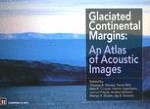1997 | OriginalPaper | Chapter
A Cross-Section of a Fjord Debris Flow, East Greenland
Authors : Robert J. Whittington, Frank Niessen
Published in: Glaciated Continental Margins
Publisher: Springer Netherlands
Included in: Professional Book Archive
Activate our intelligent search to find suitable subject content or patents.
Select sections of text to find matching patents with Artificial Intelligence. powered by
Select sections of text to find additional relevant content using AI-assisted search. powered by
The steep slope angles commonly found in fjords promotes gravity driven downslope movement of the infilling sediment [Syvitski et al.,1987; Prior and Bornhold, 1990]. Numerous debris flows occur in the long, narrow, deep Kejser Franz Joseph and Kong Oscar fjords (Fig. 1). The Parasound profile in Fig. 2 is a cross section of a debris flow deposit in the outer region of Kejser Franz Joseph Fjord. The debris flow (A, Fig. 2) cuts through a well stratified sequence (B) interpreted to be composed mainly of turbidites and sediments deposited by iceberg meltout and from glacial stream input to the fjord. Of particular note are the abrupt edges of the flow and the high angle of contact between the flow and host sediment which is a function of the extreme vertical exaggeration of this profile (approximately 1:60). The mushroom head of the flow is the result of the flow overtopping the stratified sediments by about 10 milliseconds TWT (about 8 m) and spreading out over the stratified sediments to about a kilometre on each side. Within the mushroom head of the flow, short, chaotic segments of reflectors may be remnants of the original stratified sediments which were incorporated into the flow. The flow surface is characteristically hummocky. The debris flow is overlain by a poorly stratified, mainly homogeneous unit (C).
